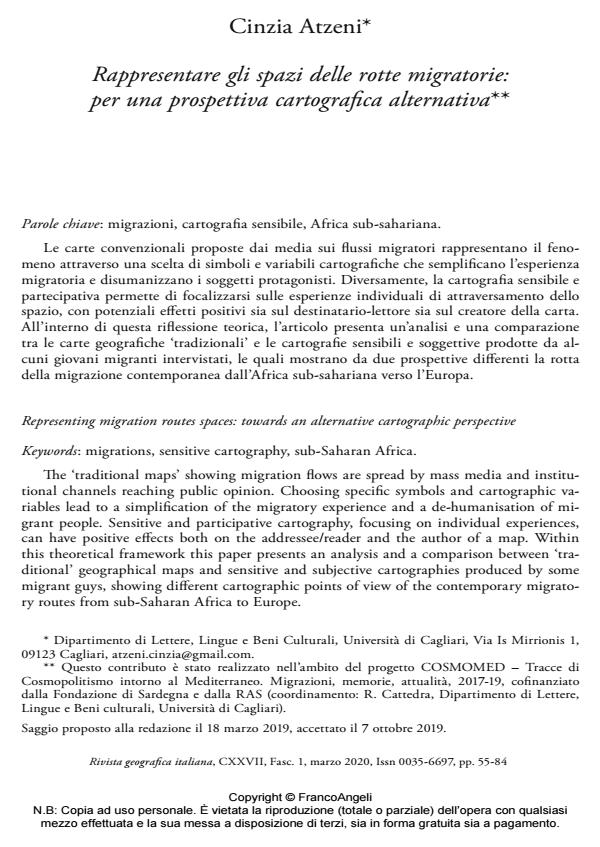Representing migration routes spaces: towards an alternative cartographic perspective
Journal title RIVISTA GEOGRAFICA ITALIANA
Author/s Cinzia Atzeni
Publishing Year 2020 Issue 2020/1
Language Italian Pages 30 P. 55-84 File size 428 KB
DOI 10.3280/RGI2020-001003
DOI is like a bar code for intellectual property: to have more infomation
click here
Below, you can see the article first page
If you want to buy this article in PDF format, you can do it, following the instructions to buy download credits

FrancoAngeli is member of Publishers International Linking Association, Inc (PILA), a not-for-profit association which run the CrossRef service enabling links to and from online scholarly content.
The ‘traditional maps’ showing migration flows are spread by mass media and institutional channels reaching public opinion. Choosing specific symbols and cartographic variables lead to a simplification of the migratory experience and a de-humanisation of migrant people. Sensitive and participative cartography, focusing on individual experiences, can have positive effects both on the addressee/reader and the author of a map. Within this theoretical framework this paper presents an analysis and a comparison between ‘traditional’ geographical maps and sensitive and subjective cartographies produced by some migrant guys, showing different cartographic points of view of the contemporary migratory routes from sub-Saharan Africa to Europe.
Keywords: Migrations, sensitive cartography, sub-Saharan Africa.
- Indagare le recenti migrazioni trans-mediterranee. Metodi e fonti di ricerca a partire dal contesto dell’accoglienza in Sardegna Cinzia Atzeni, in Geography Notebooks 8/2021
DOI: 10.7358/gn-2021-002-atze
Cinzia Atzeni, Rappresentare gli spazi delle rotte migratorie: per una prospettiva cartografica alternativa in "RIVISTA GEOGRAFICA ITALIANA" 1/2020, pp 55-84, DOI: 10.3280/RGI2020-001003